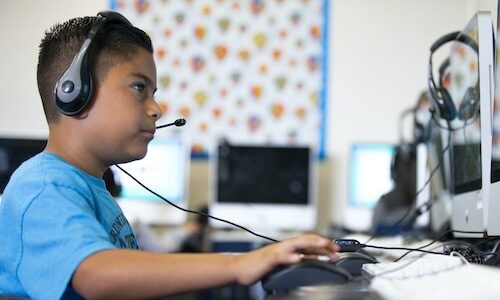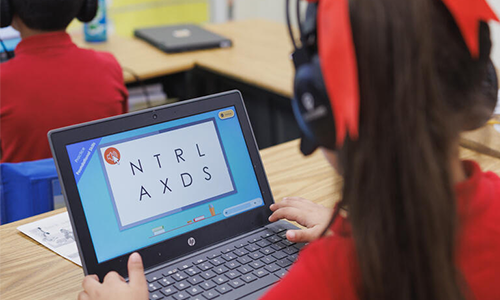
In my book The Equity Expression: Six Entry Points for Nonnegotiable Academic Success, I address topics that are often missing from the equity conversation, such as teacher efficacy and academic identities. The text is built around the framework of six entry points—systems, mindsets, relationships, products, spaces, and processes. The entry point of processes offers an opportunity to challenge what you’ve been taught about K–12 assessment and reframe how you think about assessment processes in teaching and learning.
As you read the excerpt from my book below, consider the ways you can begin to view assessment as learning.
From the pages of The Equity Expression
All of our teaching and learning processes hinge on assessment, where we gather information and data about what students know. This includes assessment processes, such as formative assessment (gathering evidence of what learners know and can do), responding to that evidence together, and certifying that learning has taken place (summative assessment). Students and educators thrive when these processes stay focused on learner context, academic goals, and partnership.
We can use assessment processes to help learners grow. We gather data that inform teaching and learning, to ascertain a student’s level of readiness, and to provide feedback that moves the learner forward. In order to best help a learner grow, it’s important to partner with them to know and understand their context, examine their learning goals, and use that context and goal information to engage in teaching and learning processes together.
Too often, assessment for learning (formative assessment) and assessment of learning (summative assessment) are done to or for students. When we “do” teaching, learning, or assessment processes to or for students, we can miss opportunities to include student voices and identities. We can miss opportunities to amplify their agency as learners. We can make decisions based on assumptions or biases, which can create learning barriers and disempower learners.
We can use assessment processes to help learners grow.
Components that are critical for equity include (1) broadening our definition of success to include more than academic achievement, (2) embedding assessment processes into teaching and learning processes as one fluid journey, and (3) co-owning processes with students throughout this journey. These equitable moves are what we call assessment as learning.
To better understand how assessment as learning can be applied with learners to enact equity in our classrooms, I sat down with a responsive teaching and learning and quality classroom assessment expert, Erin Beard, M.Ed, D.Ed. Erin Beard’s dissertation explored the intersection of assessment, equity, and trauma-informed practices. Her answers have been edited for clarity.
Hubbard: Why is assessment an equity issue?
Beard: Our nation has an outdated narrative of the teaching and learning process, including assessment. It’s what I experienced as a student and how I was trained as a teacher. In this model, there’s a pattern of teach, then test, then grade. In this model, academic success can be overemphasized at the expense of other kinds of important learning and success, such as well-being and self-efficacy.
Assessments and data can be used as “gotchas” or even weapons against students and educators rather than opportunities to show knowledge and skills. This approach can be detrimental to our students and educators, especially those who have experienced toxic stress or trauma, which can include historical, racial, and adverse childhood experiences. In other words, the outdated model can create barriers to learning and even retraumatize people. We want to prevent and mend that. There can be a conscious or unconscious mindset that students are empty vessels that need to be filled or fixed, which is a deficit-based perspective. Not everyone succeeds in this model, but that was acceptable for a long time; in fact, ranking, sorting, and not everyone making it was considered a sign that the class, course, unit, lesson, quiz, or test was tough enough. For a very long time, this model was widely expected and accepted. But it’s one reason why we have educational disparities, and why we should really consider assessment as learning.
There can be a conscious or unconscious mindset that students are empty vessels that need to be filled or fixed, which is a deficit-based perspective.
Hubbard: How can assessment as learning promote student agency and success?
Beard: Assessment serves as a process that promotes student agency and success when there’s a learner empowerer mindset. This means that we see that the purpose of the educator and learner having time together is to propel academic success, well-being, and agency, not to manage, fix, or fill students with knowledge, march them through content, or make them comply. The assessment-as-learning process revealed important information about whole-human success, not just academics.
Hubbard: How would you explain assessment as learning to educators?
Beard: In my professional journey, I learned about formative assessment, what we’re calling assessment for learning, and summative assessment, which is what we’re calling assessment of learning. These are the types of assessment processes I was trained in as a teacher. Eventually, I began to notice a disconnect between how we taught and what we assessed, as well as a greater disconnect from the other parts of teaching and learning. Assessment as learning connects all of the processes—and not just for academic success. It’s also connected to student well-being and self-efficacy. Assessment as learning gives us a more fluid and human-centered view of and approach to teaching and learning processes, including assessment and data use. We can include our students in this fluidity so that assessment and data use don’t feel like it is something that interrupted learning or was being done to learners, but rather it is an integral part of the teaching and learning process that is accomplished with learners.
Hubbard: Why do we need to rethink assessments?
Beard: We need to make sure we’re partnering with colleagues, students, and families to regularly pause and ask, (1) What is the purpose of the selected assessment process and tools that we use? (2) What are we planning to do with the results? (3) Does the assessment and its purpose fit the context, the chosen outcome, and its placement in the learning progression? and (4) Do our uses of the assessment process, tool, and results match the purpose they were designed to serve?
Read more
For more information on the entry points for building equity, check out The Equity Expression: Six Entry Points for Nonnegotiable Academic Success and our professional learning workshop series on creating supportive environments. For more on K–12 assessment, I encourage you to read “What is formative assessment?,” “Formative assessment is not for grading,” and “27 easy formative assessment strategies for gathering evidence of student learning.”







